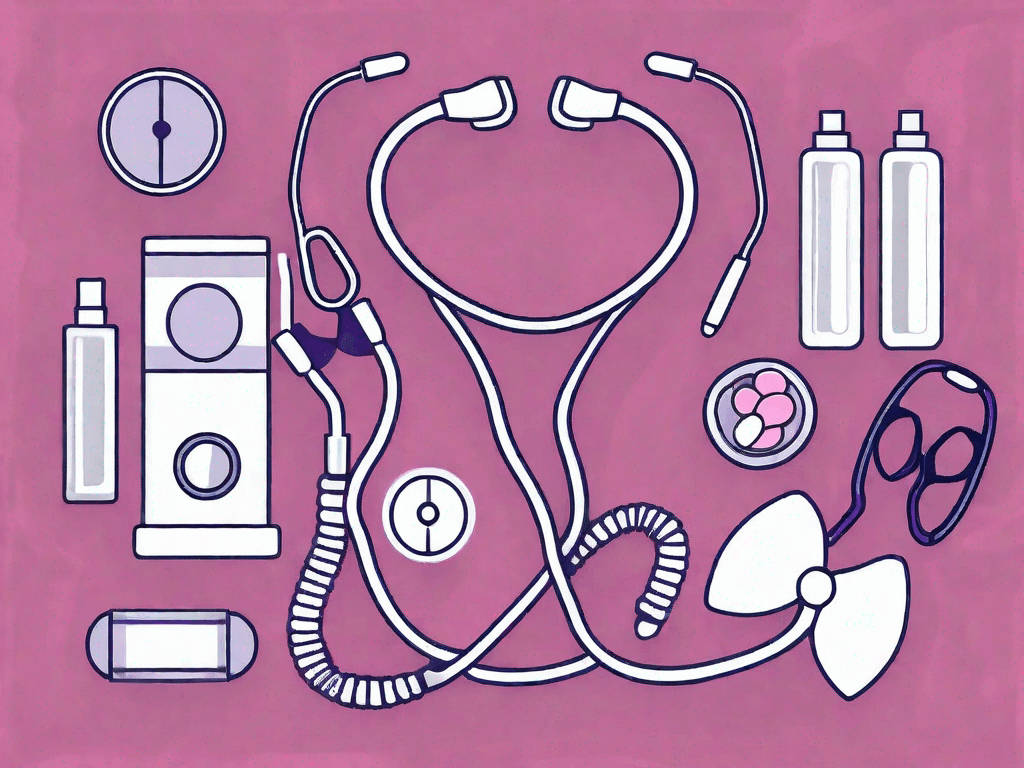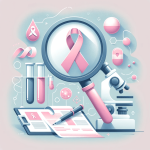Breast cancer, a prevalent disease affecting millions, is the uncontrolled growth of cells in breast tissue. Not all breast lumps are cancerous, but they should be evaluated. Factors like genetics (BRCA1/2 mutations) and hormones play roles in its development. Different types, such as Ductal Carcinoma and Inflammatory Breast Cancer, each have unique characteristics and treatments. Lifestyle choices and environmental factors can influence risk. Symptoms include lumps, breast changes, and nipple discharge. Early detection through screenings and self-exams is crucial. Diagnosis may involve mammograms, MRIs, or biopsies, and staging is key to treatment planning. Options include surgery, radiation, chemotherapy, and targeted therapy. Understanding breast cancer empowers individuals to make informed health decisions and seek appropriate care.
Breast cancer is a topic that affects millions of women worldwide. It is important to understand the basics of this disease, its risk factors, symptoms, diagnosis, and available treatment options. By being well-informed, you can make proactive choices to protect your health and seek the necessary medical attention. Let’s dive into the world of breast cancer and empower ourselves with knowledge.
Understanding Breast Cancer
Defining Breast Cancer: A Basic Overview
When we talk about breast cancer, we are referring to the development of cancer cells in the breast tissues. These cancer cells can grow and form a tumor, which may spread to other parts of the body if left untreated.
It’s important to note that not all breast lumps are cancerous. Many breast lumps are benign, meaning they are not cancerous and do not pose a significant threat to your health. However, it is crucial to have any abnormal changes in your breasts evaluated by a healthcare professional to rule out any serious conditions.
Understanding breast cancer involves delving into its complexities and exploring the various factors that contribute to its development. One such factor is genetics. Research has shown that certain gene mutations, such as BRCA1 and BRCA2, can increase the risk of developing breast cancer. These gene mutations are inherited and can be passed down through generations, making it important for individuals with a family history of breast cancer to be vigilant about their health.
Another important aspect of understanding breast cancer is recognizing the role of hormones. Estrogen and progesterone, two hormones that regulate the menstrual cycle and play a role in pregnancy, can also impact the development of breast cancer. Hormone receptor-positive breast cancers, which are fueled by the presence of these hormones, account for a significant portion of breast cancer cases.
The Different Types of Breast Cancer
Breast cancer can present itself in various forms, and understanding these different types can better equip you to navigate your own healthcare journey. The most common forms of breast cancer are:
- Ductal Carcinoma: This is the most prevalent type of breast cancer, starting in the milk ducts of the breast.
- Lobular Carcinoma: This type begins in the lobules, which are the glands that produce milk in the breast.
- Inflammatory Breast Cancer: Unlike other types, this aggressive form of breast cancer can cause the breast to appear red and swollen.
While these are the most common types of breast cancer, it’s important to note that there are other, less common subtypes as well. For example, Paget’s disease of the breast is a rare form of breast cancer that affects the skin of the nipple and areola. Additionally, there are certain types of breast cancer that are more prevalent in younger women, such as triple-negative breast cancer.
Each type of breast cancer has its own unique characteristics and treatment options. For instance, hormone receptor-positive breast cancers may be treated with hormone therapy to block the effects of estrogen and progesterone. On the other hand, HER2-positive breast cancers may require targeted therapies that specifically target the HER2 protein, which is overexpressed in these types of cancers.
Understanding the different types of breast cancer is not only important for patients, but also for healthcare professionals. It allows them to tailor treatment plans to the specific needs of each individual and provide the best possible care.
Risk Factors and Causes of Breast Cancer
Genetic Factors in Breast Cancer
While the exact causes of breast cancer are not fully understood, certain factors can increase your risk of developing the disease. One significant risk factor is having inherited genetic mutations, such as mutations in the BRCA1 and BRCA2 genes. If you have a family history of breast cancer or carry these gene mutations, it’s crucial to discuss genetic testing options with your healthcare provider.
Lifestyle and Environmental Influences
Aside from genetic factors, certain lifestyle choices and environmental exposures can impact your risk of developing breast cancer. Maintaining a healthy weight, engaging in regular physical activity, limiting alcohol consumption, and avoiding tobacco products can help reduce your risk. Additionally, exposure to hormone replacement therapy, certain chemicals, and radiation may also increase the likelihood of developing breast cancer.
Symptoms and Early Detection of Breast Cancer
Common Symptoms of Breast Cancer
Being aware of the potential signs and symptoms of breast cancer empowers you to take prompt action. While symptoms can vary, common signs of breast cancer include:
- Newly-developed breast lumps or thickening in the breast tissue.
- Changes in breast size or shape.
- Unexplained breast pain or tenderness.
- Nipple changes, such as nipple inversion or discharge.
- Swelling or redness on the breast or nipple.
It is important to remember that these symptoms may not always indicate breast cancer but should be promptly evaluated by a healthcare professional.
Importance of Regular Screenings and Self-Examinations
Early detection offers the best chance for successful treatment of breast cancer. Regular screenings, such as mammograms, can identify potential abnormalities before they manifest as noticeable symptoms. It’s essential to discuss the recommended screening guidelines with your healthcare provider and follow them diligently.
In addition to screenings, performing regular self-examinations can help you become familiar with how your breasts look and feel. If you notice any changes during self-examinations, promptly seek medical attention for further evaluation.
Diagnosis and Staging of Breast Cancer
Diagnostic Tests for Breast Cancer
If breast cancer is suspected, further diagnostic tests may be necessary to confirm the diagnosis. These tests can include imaging studies, such as mammograms, ultrasounds, and MRIs. In some cases, a biopsy may be performed to analyze a sample of breast tissue under a microscope.
Understanding the Stages of Breast Cancer
Once breast cancer is diagnosed, it’s important to determine the stage of the disease. Staging helps determine the extent of cancer spread and guides the selection of appropriate treatment options. The stages range from 0 to IV, with stage IV being the most advanced. Your healthcare provider will explain your specific stage and discuss the treatment options available.
Treatment Options for Breast Cancer
Surgical Treatments and Procedures
Surgery is often one of the primary treatment approaches for breast cancer. Depending on the specific characteristics and stage of your cancer, your healthcare team may recommend various surgical options, such as:
- Lumpectomy: The removal of the tumor and surrounding healthy tissue.
- Mastectomy: The removal of the entire breast tissue.
- Reconstructive Surgery: This optional procedure aims to restore the appearance of the breast after a mastectomy.
Radiation, Chemotherapy, and Other Treatments
In addition to surgery, other treatments may be recommended. Radiation therapy uses high-energy beams to destroy cancer cells, while chemotherapy involves the use of medications to target and kill cancer cells throughout the body. Other treatments, such as hormone therapy and targeted therapy, may be recommended based on the specific characteristics of the cancer.
Each treatment approach comes with its own benefits, risks, and potential side effects. It’s essential to have an open and honest discussion with your healthcare team to make informed decisions about your treatment plan.
Remember, a breast cancer diagnosis can be overwhelming, but you are not alone. Reach out to supportive networks, join local or online support groups, and lean on loved ones for emotional support. With advances in medical science and your proactive approach, there is hope for the future. Arm yourself with knowledge, advocate for your health, and take charge of your breast cancer journey!






